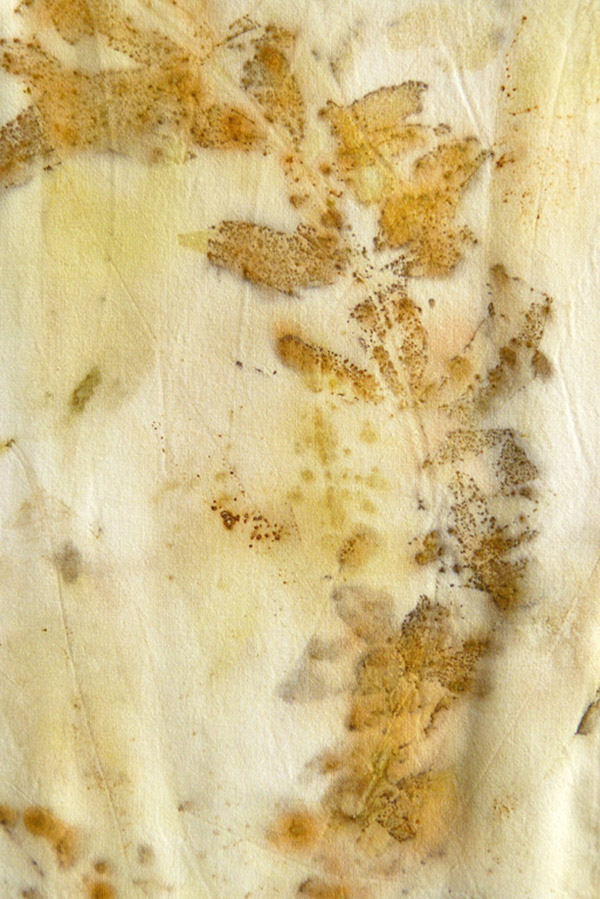dyeing plants
In natural dyeing, it is fundamental that the used plant should be of a dye plant species. This means that these plants must have some substances that react with the mordant to fix the colours in the fabric fibres. Distinct parts of the plant can be used such as leaves, flowers, fruits, seeds, barks, roots, branches, and sawdust.
In my work with natural dyeing, I used, mostly, the plants that I found on São Paulo streets, such as avocado and guava tree leaves. There is a great plant to use to dye, which is called black-jack (Bidens pilosa), that I picked from within the cracks in the curb. It is considered an invasive species, but it also has medicinal qualities. Many times, I have joined leaves and flowers left on the ground such as hibiscus flowers, eucalyptus leaves, and tropical almond leaves (Terminalia catappa). I usually use kitchen waste like onion skin, carrot top, avocado peel and seed, and Brazilian-pine nutshell. Last but not least, I like using traditional Brazilian dye plants such as urucum (Bixa orellana), which is used by indigenous people to paint their bodies; macela (Achyrocline satureioides ), a specie of daisy with tiny yellow flowers; erva-mate (Ilex paraguariensis), which is a typical tea from south of Brazil; and anileira (Indigofera suffruticosa), Brazilian indigo blue.
The list is quite long because there are many species that dye and many of these species are also medicinal plants used frequently in herbal medicine. But I always prefer those plants that somehow surround me.

colours of nature
The list of colours below presents some plants that work very well for natural dyeing and botanical printing. Many are Brazilian species and others are not, but easy to find. Note that the same plant can produce different colours. This is because depending on the mordant we use for fixation, the tone changes. Like macela (Achyrocline satureioides), which, if used with alum, colours yellow and if used with iron, the colour is moss green. The tones also vary a lot depending on the type of dyeing, whether botanical contact printing or traditional natural dyeing, the quantity of plants used, the time immersed in the dye and many other factors. Plants marked with * (asterisk) were tested only in botanical contact printing.
Blue
Anileira (indigo), black nightshade * (bluish tones
Reddish
Brazilian pine (araucária), brazilwood, barbatimão, fig leaf *, coffee leaf *, eucalyptus cinerea *, Japanese grape leaf *
Gray and graphite
Yerba mate, barbatimão, blackjack, casuarina *, guava *, tropical almond tree *, pixuruca *, niruri *
Yellow
Macela, turmeric, carqueja, chamomile, carrot top, onion skin, cosmos leaf *, silk oak *, dandelion *
Orange
Annatto, black jack *, cosmos *, lichens *, eucalyptus cinerea *
Purple
Blackberry *, black nightshade *, pink knotweed *
Greenish
Macela + indigo, pomegranate, red cabbage, yerba mate, tropical almond tree, carrot top, macela, carqueja *, glory bower *, joá *
Gold and brown
Hibiscus, pomegranate, onion peel, black jack, eucalyptus, rose, walnut, araça, tropical almond tree, Brazilian pine, barbatimão, jabuticaba, guava, mangrove tree leaf, ipe flower *, cotton tree flower, coffee
Blueish gray
Blackberry, roxinha (sawdust), black beans, aroeira, avocado leaf, lavender, geranium *, quaresmeira *
Pinkish
Avocado kernel and peel, aroeira, embaúba and jabuticaba *
